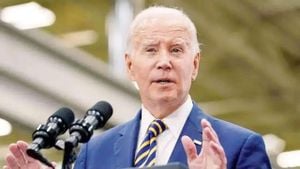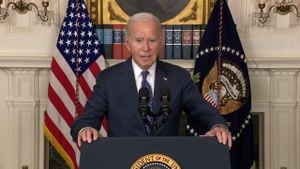Gun violence has once again surged to alarming levels across various cities in the United States, leaving communities mourning and leaders scrambling for solutions. From coast to coast, reports of recent fatal shootings have emerged, highlighting the devastating grasp of gun violence on the nation. Each incident not only claims lives but also reverberates through families and neighborhoods, amplifying fears and prompting calls for change.
Take, for example, the tragic shooting at the Westgate Entertainment District in Arizona. Just as families were enjoying the evening ambiance, chaos erupted when multiple shots were fired. Witnesses recounted the harrowing experience, describing how laughter turned to panic almost instantly. By the time the dust settled, three lives had been lost, and several others sustained injuries. This incident added to the grim statistics of gun-related fatalities, illustrating how even joyful gatherings can become scenes of horror.
Not far away, the streets of Chicago have been rattled by gunfire as well, with recent reports indicating numerous fatalities over the weekend alone. Local officials have struggled to come to terms with rampant gun violence, which they declare has reached epidemic proportions. Community leaders have called for immediate action, pressing for more stringent gun control measures. Residents are calling for acknowledgment of their plight and for government officials to take active steps to protect their communities.
Meanwhile, New York City has also seen its fair share of gun violence. The summertime often brings increased activities and events, but it seems to also correlate with higher instances of shootings. Just last week, two young adults were shot in separate incidents. The authorities have ramped up their response, bringing additional resources to affected neighborhoods. The urgency feels palpable as everyone from local law enforcement to residents discuss ways to reclaim their streets.
Experts have pointed out several systemic issues contributing to the rise of gun violence, including socio-economic factors such as poverty and education disparities. They argue these conditions contribute to the cyclical nature of violence within certain communities, making it imperative for structural changes to occur. More than just enforcing stricter laws, the conversation must also center around addressing the root causes of violence.
This growing trend has sparked conversations not just among policymakers but within families and neighborhoods. Without adequate measures, many fear the violence will continue to escalate. Parents are understandably worried about their children’s safety, and schools are having discussions about enhancing security measures. Places traditionally considered safe have been brought under scrutiny, leading to discussions on how to create secure environments.
On the broader scale of things, the national dialogue around gun control and safety measures has reignited. Advocacy groups are seizing this moment to push for policy changes, engaging communities with information campaigns and rallying support. Their message is clear: something must be done, and it must happen soon.
A number of organizations and non-profits have mobilized to provide resources for affected families. From counseling services to community support groups, these efforts aim to bring healing to those who have lost loved ones. Local churches and civic groups often emerge as safe spaces, helping guide people through the emotional aftermath of such tragedies.
Tragically, the statistics paint a sobering picture. According to Gun Violence Archive, over 100 individuals lose their lives to gun violence each day. This statistic not only showcases the urgency of the issue but reflects the everyday reality faced by many across the nation. Each number corresponds to personal stories of loss, hardship, and enduring grief.
Community leaders have begun to brainstorm innovative solutions to combat this issue. Initiatives focusing on community engagement and youth programs are at the forefront. More than ever, communities are exploring methods to increase connections, engagement, and unity among residents. They believe this could lead to significant improvements and deter violence before it starts.
Simultaneously, the dialogue around personal accountability has emerged. Communities have begun to confront individuals on the need for responsibility when it pertains to gun ownership. The importance of education surrounding firearm safety is emphasized. Advocates believe this focus could help lower accidental shootings and encourage more responsible behavior among owners.
While the national conversation surrounding this epidemic grows louder, outcomes remain to be seen. The impact on society is multifaceted, and structural changes will take time. Yet communities are resilient and actively pursuing paths to healing and peace.
Calls for new legislation have been heard through protests and open forums among local governance. Citizens are reminding their representatives of their safety responsibilities. Gun violence deserves urgent addressing, as families continue to be decimated by everyday realities.
These recent incidents highlight the everyday fears felt by countless families and communities, pressing the need for continued conversations about gun violence. The effects of such tragedies linger long after the shooting stops. For many, healing seems like it’s just out of reach. Resolving this complex issue will require continued collaboration between communities and legislatures. The nation hopes for progress as it grapples with the scars left by gun violence.



